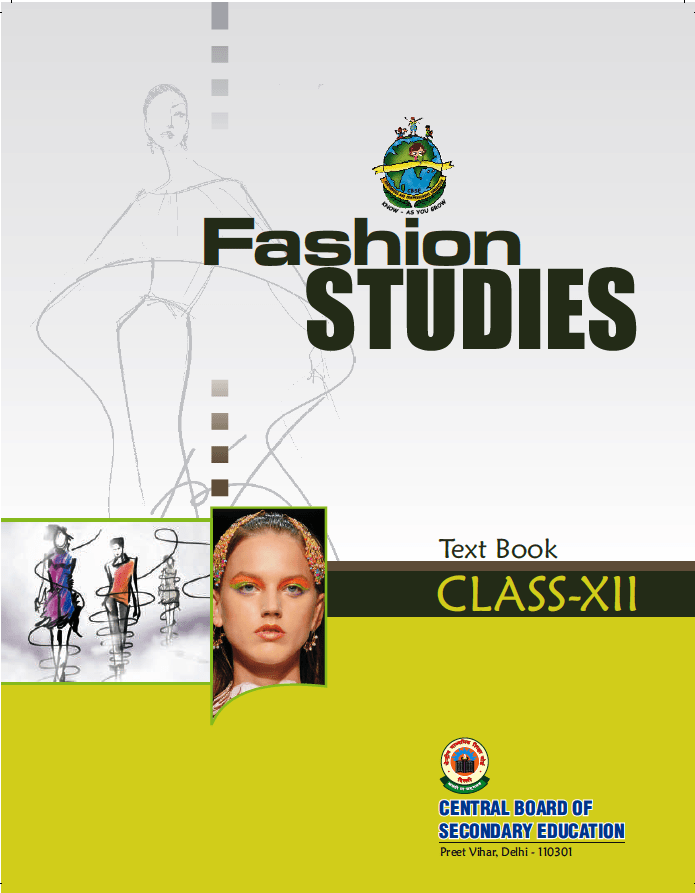Fashion Studies text book for Class-12, CBSE
-Introduction.
:-Fashion Studies click here to view complete e-book.
In the previous book on ‘Fashion Studies’ for Std XI, the meaning of fashion and other aspects within its ambit has been discussed. In this book, we trace the history of clothing down the ages and how it facilitates the understanding of contemporary fashion. At the onset it is important to understand that though the words fashion, clothing, apparel and costume are often used interchangeably, the terms are not identical in meaning. Fashion is more than just clothing; it reflects the wider spectrum of aesthetics, art and design trends in contemporary society. This makes it a multi-faceted word engaging with a range of surrounding influences. In simple terms, fashion is a social process by which newly introduced styles or trends become popular in a certain time with acceptability by a wider cross-section of consumers. Clothing is a general term referring to actual objects related to the human body. Apparel refers to garments made of fabric, knits, leather or other wearable materials. Costume is derived from word ‘custom’ evolving from the environment and customs of society. It refers to clothing for a specific use – be it for a ritual or performance, ethnic or historical within a specific context of occasion and time. To understand contemporary fashion within a context, it is essential to know its origin and evolutionary process. The knowledge of fashion and costume history is important since they are the inevitable outcome of the socio-cultural-political influences prevalent in society at different points in time. Clothes are what cover the human body, which in turn, depend on physical conditions like climate, geographical area, available raw material, textiles etc. Clothes indicate social significance like religious beliefs and aesthetics; exhibit individual status; proclaim alliance with or create differentiation among a group. Items of clothing and accessories would be included in the vocabulary of clothing. There are several points of views regarding the origin and need for clothing. One school of thought believes that man covered his body for protecting himself from the vagaries of climate and nature. Psychologists and ethnologists refer to psychological reasons like the fig leaf used by Adam and Eve as a symbol of modesty referred to in the Bible. Anthropologists cite reasons associated with taboo as well as the desire for personal adornment to please both oneself and others. Psychologists propound the view that human being like to modify their appearance – the use of body covering is one such type of modification. Other ways for achieving this is through varying hairstyles, alteration of shape and surface of the body through clothes, body adornment etc. Such changes are done in order to make the self, more acceptable to others so that there is a commonality and bonding with the others within the same social ‘tribe’. Primitive men covered their body with animal skin and fur which were shaped to parts of the human body. Different sizes, shapes and textures of skins would have necessitated varying approaches to their use and function when applied to cover or adorn the human figure. Later they used tree bark fibre to protect themselves against extremities of climate. However clothes are not merely utilitarian but have a deeper significance. The co-relation between the belief of primitive men in magic and representation of successful hunting through cave paintings dates back to the early Paleolithic period. Even today, certain tribes that normally live naked also wear clothes on special occasions!























